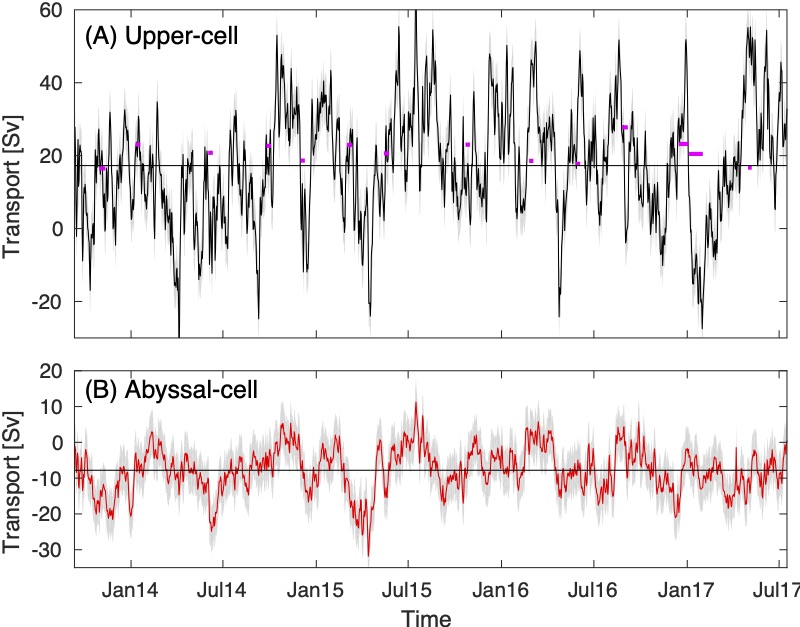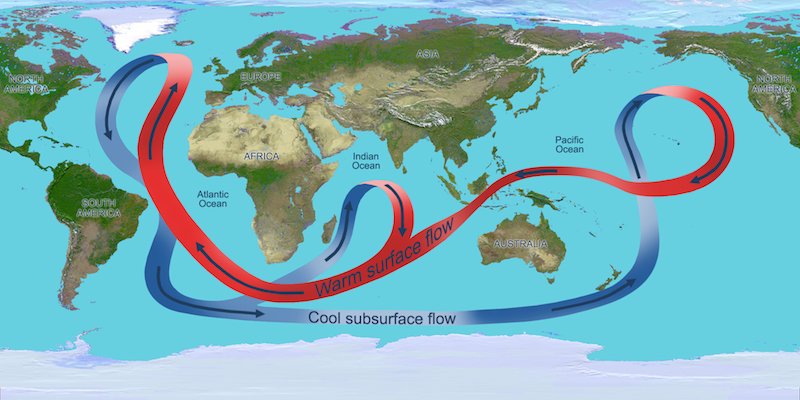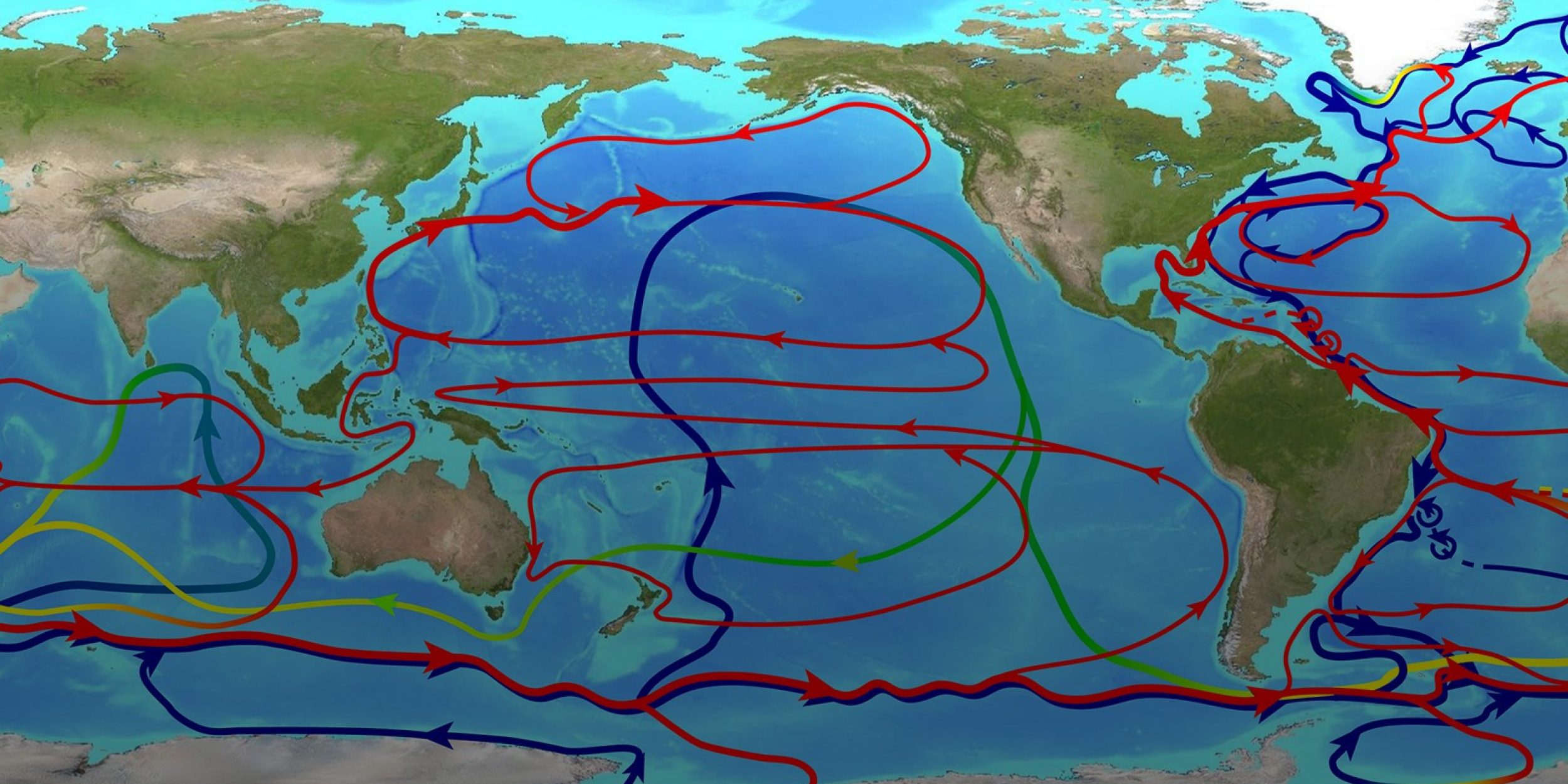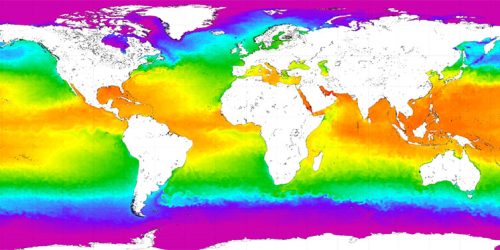In a recent study published in the journal Science Advances, oceanographers funded by CPO’s Climate Variability and Predictability Program at NOAA’s Atlantic Oceanographic and Meteorological Laboratory and the Cooperative Institute for Marine and Atmospheric Studies for the first time describe the daily variability of the circulation of key deep currents in the South Atlantic Ocean that are linked to climate and weather. The study found that the circulation patterns in the upper and deeper layers of the South Atlantic often vary independently of each other, an important new result about the broader Meridional Overturning Circulation (MOC) in the Atlantic.
Traditionally, most MOC observations have been focused in the North Atlantic, where the largest volumes of new deep ocean waters are formed. Observations in the South Atlantic were historically limited in comparison. In 2009, scientists and engineers at AOML began working with international partners to build the South Atlantic MOC Basin-wide Array (SAMBA), a line of oceanographic sensors anchored on the seafloor at locations across the South Atlantic in order to provide a more complete understanding of the behavior of the MOC in that region.
“A key finding from this study is that our data showed that the ocean currents in the deepest parts of the South Atlantic Ocean behave differently than we thought before we had this new long-term dataset, which may have large implications for the climate and weather forecasts made by ocean models in the future,” said Marion Kersale, Ph.D, an oceanographer with the University of Miami’s Cooperative Institute for Marine and Atmospheric Studies and lead author on the study.
This study found that the upper layer circulation is more energetic than that in the very deep, or abyssal, layer at all time scales ranging from a few days to a year. The flows in the upper and deep layers of the ocean behave independently of one another which can impact how the entire MOC system influences sea level rise and hurricane intensification in the Atlantic.


Figure 1. Temporal variability of the volume transports from the SAMBA array within the upper cell (A – black) and the abyssal cell (B – red). Gray shading indicates the estimated daily accuracy. The magenta dots/bars highlight the independent volume transports estimated using data from the trans-basin expendable bathythermograph (XBT) line at 35°S (AX18). (XBT data courtesy of Shenfu Dong, Ph.D, NOAA/AOML)
The MOC consists of an upper cell of warmer, lighter waters that sits on top of the colder, denser waters, known as the abyssal cell. These water masses travel around the global ocean, exchanging temperature, salinity, carbon and nutrients along the way. For many years oceanographers had an overly simplistic idea of the MOC, believing it brought warm waters to the northern North Atlantic where the waters cooled and sank and returned to the south. This simple picture can be thought of as a conveyor belt that rotates with surface and deep waters moving in opposite directions. The results of this study have further shown that the MOC is much more complex than the conveyor belt schematic shown in the Figure 2 below.


Figure 2. A very simple early schematic overview of the Meridional Overturning Circulation (MOC).
Research such as the study led by Kersale is helping oceanographers to refine and improve our understanding of the complexities of the MOC system, in particular the variability of the deeper cell that in the South Atlantic that lies beneath the upper layer depicted in Figure 2. These observations will allow scientists to validate earth system models, and will aid in NOAA’s goals to improve our understanding of the climate/weather system.
This story was originally posted by NOAA AOML Communications.










